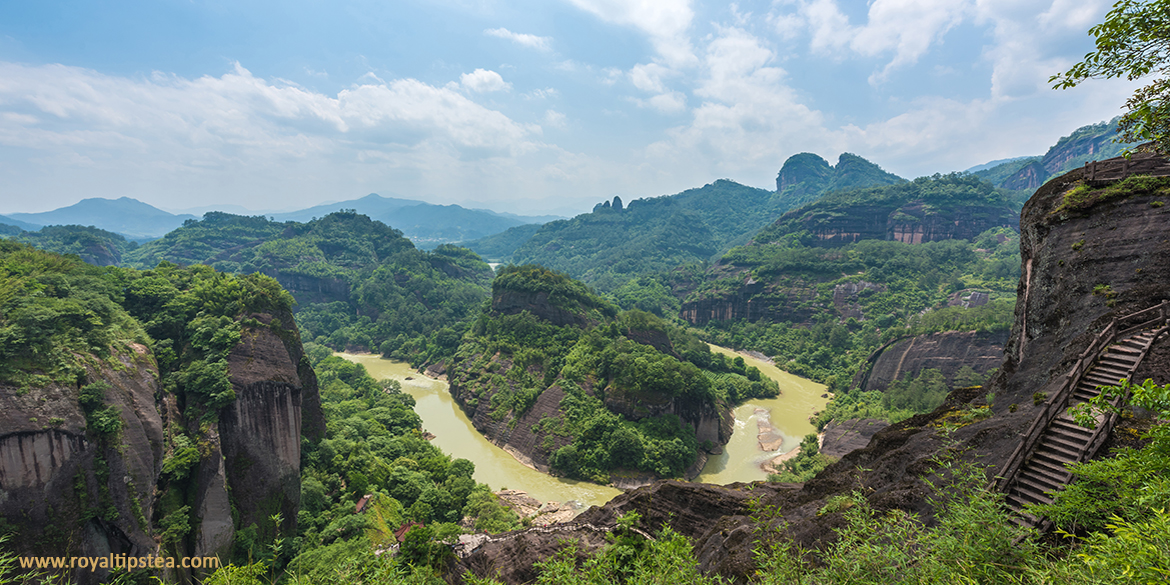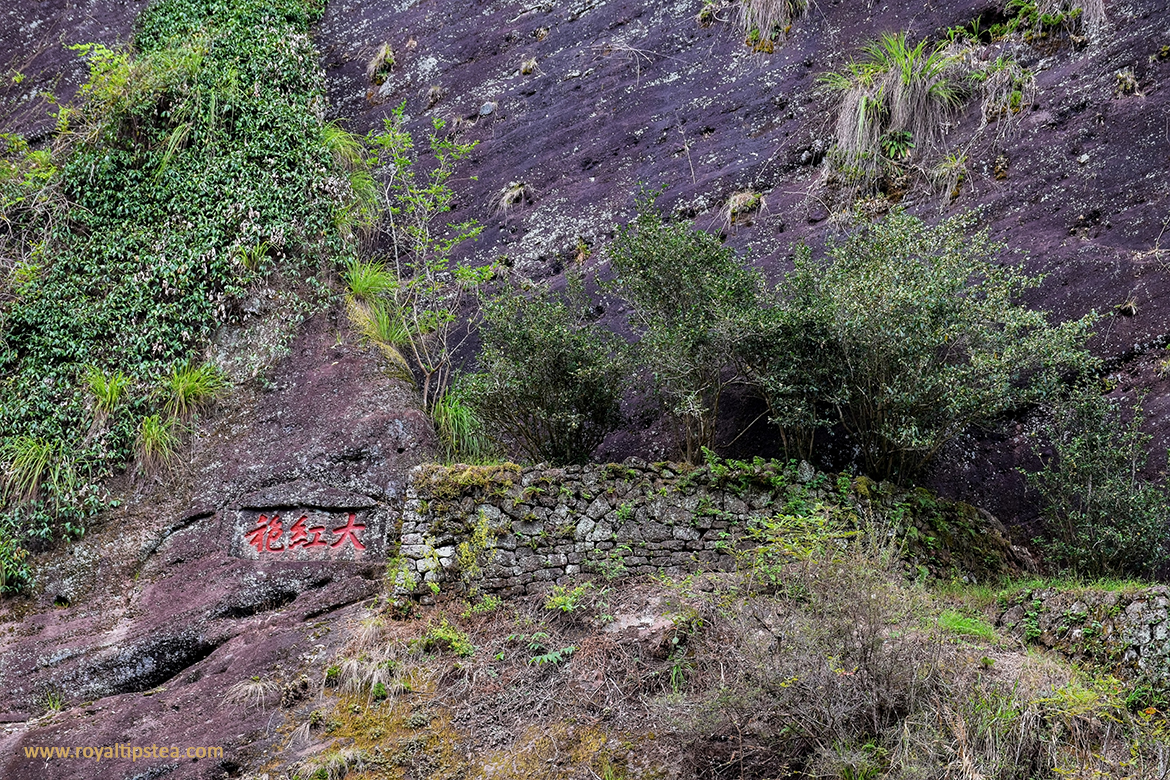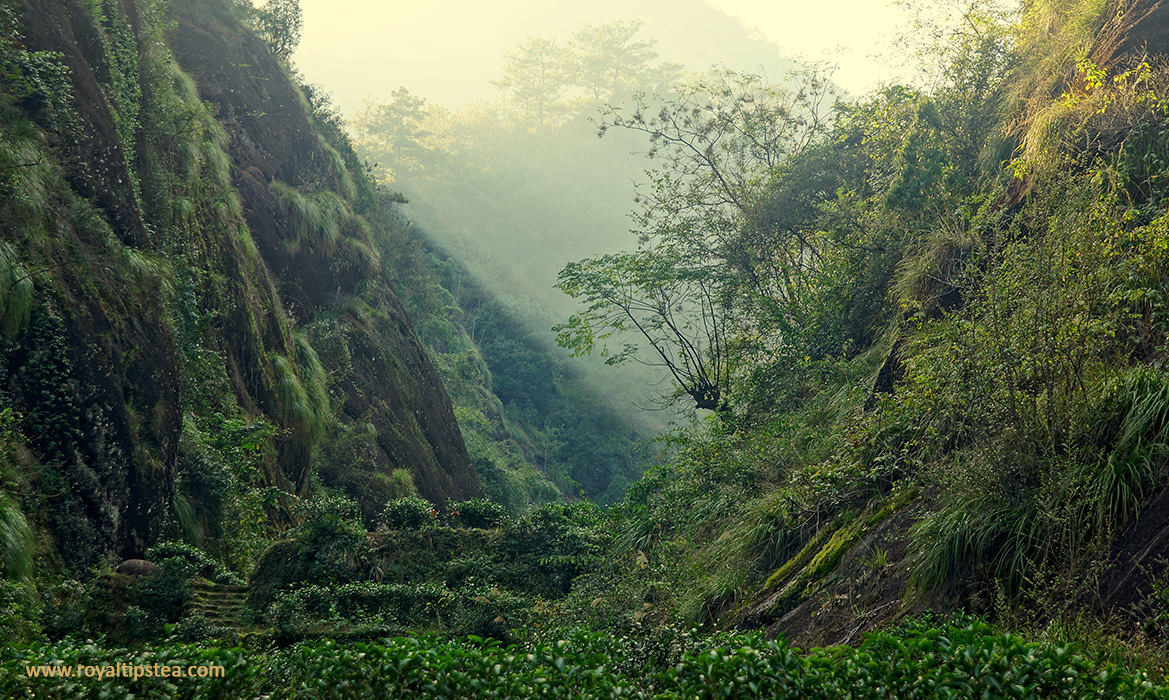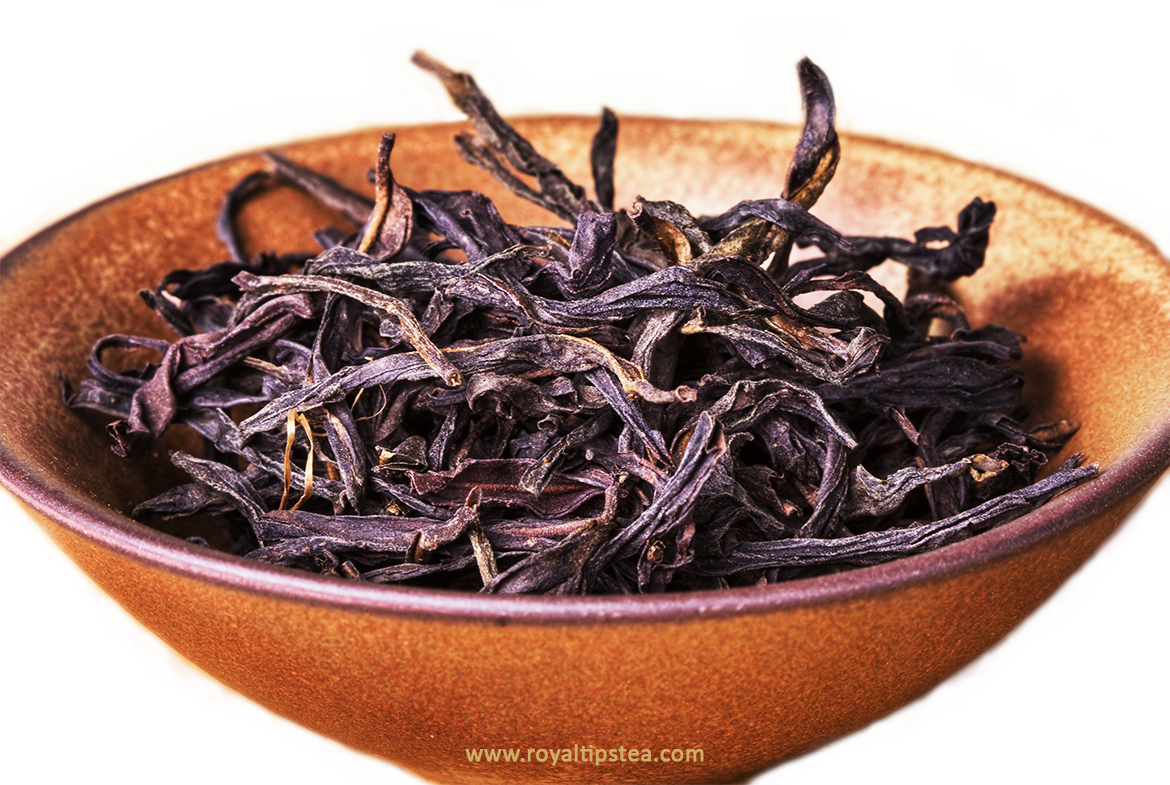The post Da Hong Pao, The Most Expensive Tea in the World first appeared on Blog Royal Tips.
]]>In 2002, 20 grams of Da Hong Pao (Big Red Robe) tea was sold for 180,000 yuan – equivalent to almost US $28,000. That works out at $1400 for 1 gram of the loose leaves and more than US$10,000 to brew a pot, and it makes this beautiful oolong the most expensive in the world.
Oolong translates as ‘black dragon’ and the large, twisted, brownish-black dry leaves often resemble dragons or serpents.
What is Da Hong Pao and where does it come from?
This world famous tea is produced in the Wuyi Mountains in the north west of Fujian province, an area that has a very long tea history and which in 1992, were designated a UNESCO World Heritage site. The soil in this volcanic mountain range is very rocky and the plants have to wind their roots around the rocks to find the nutrients and water that they need to thrive.

The teas made from their leaves are known as ‘rock oolongs’ or ‘yan cha’ and often have a mineral, almost flinty, wet stone character that is described as ‘petrichor’, a word devised in 1964 to mean the smell of wet earth or stone after rain has fallen (from Greek ‘petra’ meaning stone’ and ‘ichor’, meaning the fluid that flows through the veins of the gods in Greek mythology.
The bushes from which that very expensive Da Hong Pao was made sit high up on a rocky ledge in a narrow gorge surrounded by tall pillars of rock, and no-one, except a small number of designated tea masters, is allowed to approach anywhere near.

The group of four bushes (some people count 6 to include two bushes that sit slightly below the other four) have been growing here since the time of the Ming Dynasty (1368 to 1644 AD).
They became famous when the mother of a Ming Emperor was cured of an enduring illness by tea made from their leaves and the emperor sent his ‘Big Red Robe’ to cover and protect the precious bushes. Each year, only around 400g of oolong tea is made from those original bushes and it is either presented by the Chinese government to very important visiting dignitaries or it is sold at very high prices.
But not all Da Hong Pao teas cost so much and that’s because, over the centuries, cuttings have been taken from the original mother bushes and cultivated in the surrounding area. But the taste and aroma of tea made from those younger bushes vary according to the specific location where they grow. The soil, weather patterns, temperatures, amount of sun and rain, etc. can affect the way in which the bushes grow and the eventual flavour of the tea in the cup.

Production of Da Hong Pao oolong tea
This chinese tea is made by the usual dark oolong method.
- Shoots of 3 or 4 open leaves (no buds) are gathered in the late spring and autumn and withered in shady sunlight for about two hours.
- Then they are taken indoors, spread on bamboo baskets, and from time to time shaken, and tumbled inside a bamboo drum to gently bruise the leaves in order to provoke around 30%-40% oxidation.
- When the desired level of oxidation has been achieved, the leaves are panned to stop any further changes in the leaves, lightly rolled to develop the flavour, and then dried.
- When the leaf comes out of the drying process, the colour of the shoots is a mixture of green and brown and the leaves are still attached to the stems. All the stems and stalks are then removed by hand (the reason why only single twisted leaves are visible in the dry leaf of Da Hong Pao).
- Finally, the tea is roasted over charcoal to further dry the leaves and to develop the wonderful characteristic layers of sweet fruity flavours in the top notes and dark roasted hints of dark chocolate, molasses, dates, cocoa nibs and dried fruits.

The post Da Hong Pao, The Most Expensive Tea in the World first appeared on Blog Royal Tips.
]]>The post The story of Oriental Beauty oolong tea first appeared on Blog Royal Tips.
]]>What does Oriental Beauty oolong tea owe its popularity to?
Known for its fruity fragrance and bittersweet flavour with a touch of Muscat grape, this magnificent oolong tea is produced in a somewhat different manner to other oolongs. Firstly, the tea is left to wither for a longer period than is usual for oolongs due to the high level of humidity in the region where this tea is cultivated. The oxidation level of Oriental Beauty is higher than most other oolongs (about 70%), and the little shoots are then panned and rolled very carefully so as not to break them. All of these factors give this tea a unique aromatic dimension.
Aromatic compounds as a defence mechanism in Oriental Beauty tea leaves
Apart from the unusual manufacturing process, what really makes Oriental Beauty so popular is the fact that the young leaves of this fascinating oolong tea are invaded by tiny insects while they are growing. When they know they are being “attacked”, the plants activate their defence mechanisms, generating aromatic compounds that are designed to deter the insects from biting. These aroma compounds are enhanced during the manufacture of the tea. The damage caused by the insects also causes a light oxidation in the leaves while they are still growing on the plant. The same effect is achieved during the bruising or shaking stages of oolong processing , when the cells of the leaves are slightly broken in order to induce light oxidation, while at the same time preserving the leaves intact.
For the production of oolong teas, tea manufacturers usually select mature tea leaves (up to 3 or 4 tea leaf) without buds. Instead, Oriental Beauty oolong tea is manufactured using the unopened buds and the first two young leaves of the plant, as they are the most attractive to insects. The invasion usually occurs during the summer months and causes the price of tea harvested in this period to shoot up.
Defence mechanisms in plants are more complex than may appear at first glance. When a plant feels threatened, it will adopt a specific defence response depending on the nature of the attack. This means that not all insects will cause the same molecular changes in the plant as a response to attack and potential damage. In the case of Oriental Beauty the insect responsible for the production of volatile aromatic compounds in the tea leaves is called Empoasca Onukii (Cicadellidae family), or Jacobiasca formosana, commonly known as leafhoppers. To make the highest quality Oriental Beauty, the producer selects only the leaves that are attacked by the insect, which increases the fragrance of the oolong tea. This work requires a great deal of knowledge, as the amount of leaf damage also influences the flavour of the tea. Even so, the infestation does not occur in all tea plantations and producers tend to manage their gardens in the most natural way possible in order to attract the tiny creatures.
The role of terpenes in the development of taste in Oriental Beauty oolong
Terpenes are volatile components that are responsible for the fragrance of oolong and black teas, and play an essential role in the formation of the complex aromatic range of flavours found in Oriental Beauty oolong tea. Among the most important are linalool and its derivatives, geranium, benzyl alcohol and phenethyl alcohol. Linalool and geranium terpenes contribute to the aroma of Muscat both in oriental beauty and in the best Darjeeling teas. The insect’s bites cause a light oxidation of the tea leaves while they are still growing on the plant, inducing the formation of other terpene components, such as diol (adds a honey and citrus taste) and hotrienol (also present in wines along with linalool and geranium and whose effect increases the muscat aroma). Terpenes usually interact in such a way that one can intensify the aroma of the other, so the leaves of Oriental Beauty that have been invaded by insects will possess an even more intense and more complex flavour. However, this can be a difficult tea to find and it is usually rather expensive. The biggest dilemma is that the appearance of the tea leaf alone is not enough to determine whether or not it was infested by the insects. What matters truly is that Oriental Beauty is a very special tea in itself, because its manufacturing process gives it a distinctive flavour that many sellers attribute to the insects in order to create a greater interest in this wonderful tea.
Oriental Beauty, an oolong tea with many names and a long history
The Chinese name for this oolong tea is Dong fan Mei Ren (東方美人) and is translated as “Oriental Beauty”. It is also commonly called Formosa Oolong, Eastern Beauty Oolong, Champagne Oolong, Bai Hao Oolong (white tips Oolong), Bragger’s Oolong, etc. Bai Hao Oolong is translated as “white-tipped Oolong tea” due to the high number of white buds that are used in the production of this tea.
Several stories are told about the origin of Oriental Beauty. One of them states that, in the past, tea leaves that were damaged by insects were considered defective and therefore discarded. One day, a producer decided to process the damaged leaves in an effort to take advantage of the harvest. The taste of the tea that was obtained from these leaves was so spectacular that the producer was able to sell it at a very high price. He boasted about the high price to his neighbours and so the tea was named “Bragger’s Tea” (Pengfeng tea). What is certain is that during the time when the island of Taiwan was under Japanese jurisdiction, the Government of Japan actively promoted the tea industry, emphasizing the quality of production and expansion strategies in the tea market. China in turn boosted the propagation of tea culture when the island passed back to its control after the Second World War. The fusion of different cultures was an enriching experience for tea producers in Taiwan and contributed to the success and fame of the spectacular Taiwanese teas as we know them today.
The post The story of Oriental Beauty oolong tea first appeared on Blog Royal Tips.
]]>